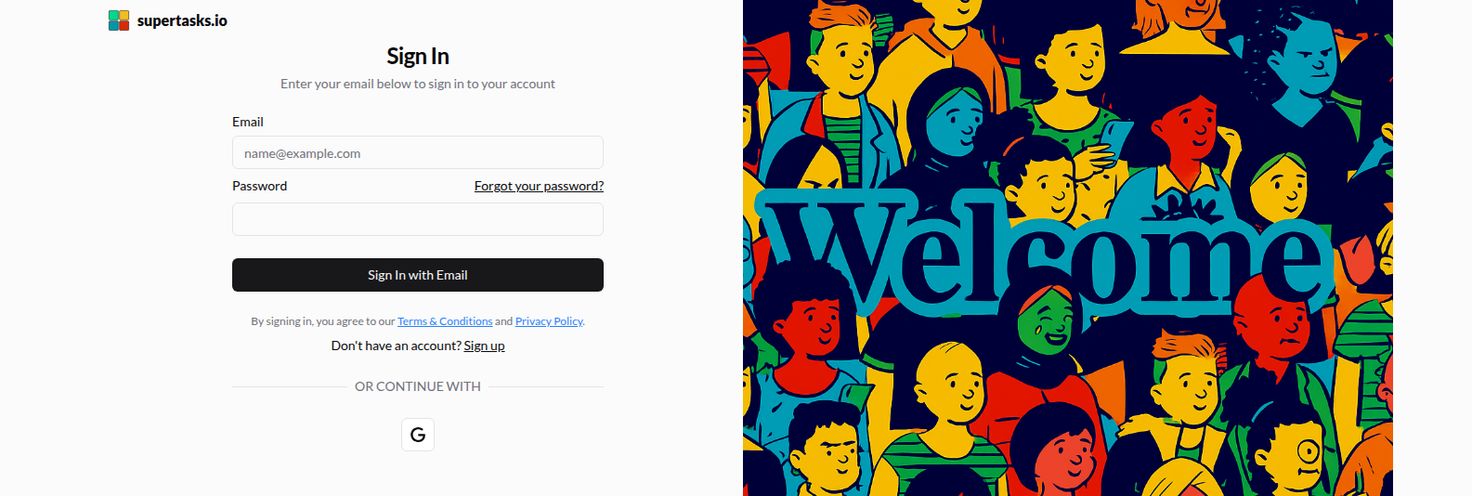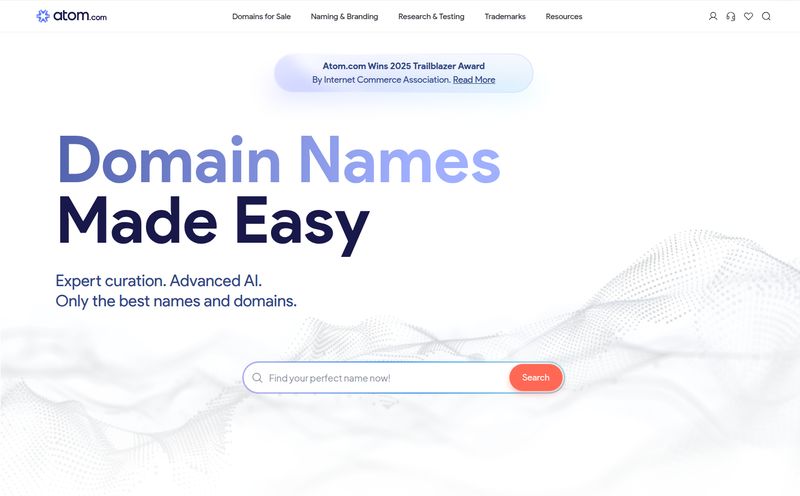There are a few words that can send a shiver down the spine of any founder, especially in e-commerce or SaaS. "Server down" is one. "Negative PR" is another. But the one that always gets me? Chargeback.
It’s more than just losing a sale. It’s a gut punch. You lose the revenue, the product, the shipping cost, AND you get slapped with a penalty fee for your troubles. It’s a system that often feels stacked against the merchant, especially with the rise of “friendly fraud.” I’ve seen businesses teeter on the edge of high-risk processing lists, all because their dispute rate crept up by a few tenths of a percent. The panic is real.
So, when a tool comes along with a name as bold as Chargeblast and claims to “eliminate chargebacks,” my inner cynic and my inner optimist get into a fistfight. The cynic scoffs, “Yeah, right.” The optimist leans in, whispering, “But what if…?”
I’ve spent some time digging into what Chargeblast is, what it does, and who it’s for. So, grab a coffee, and let’s talk about it. No marketing fluff, just a straight-up analysis from someone who's been in the traffic and conversion trenches for years.
First Off, What Are We Even Fighting Here?
Before we get into the solution, lets agree on the problem. A chargeback isn't just a refund. A customer asks for a refund, and you give it. Simple. A chargeback is when a customer bypasses you entirely and goes straight to their bank or credit card company to force a reversal of the charge. This creates a formal dispute, dings your merchant account, and costs you money. It’s a black mark on your record with payment processors like Stripe or Shopify Payments. Too many of those, and you're in hot water.
So, What is Chargeblast's Grand Plan?
At its core, Chargeblast isn't magic. It's a middleman. A very, very smart and fast middleman. Think of it like an early-warning system for your revenue. Instead of finding out about a dispute weeks later when it's already a full-blown chargeback, Chargeblast gives you a heads-up the moment a customer initiates the process with their bank.
It plugs directly into your payment processor—they're a Stripe Verified Partner and a Shopify Partner, which is a big deal—and works with card networks like Visa and Mastercard. When a cardholder complains, Chargeblast gets an alert and shoots it over to you. This gives you a critical window of opportunity (usually 24 hours) to just refund the customer and sidestep the entire dispute process. No chargeback fee, no hit to your dispute rate. The problem just… goes away.

Visit Chargeblast
How it Works in Plain English
The whole system is built on a simple premise: it’s better to give a refund than to fight (and probably lose) a chargeback. Chargeblast integrates with networks like Visa’s Rapid Dispute Resolution (RDR) and the Cardholder Dispute Resolution Network (CDRN) to intercept these complaints. Once you get an alert, you can act. For RDR alerts from Visa, it's often an automatic refund, which is fantastic. For Mastercard and CDRN alerts, you do have to take action yourself, which is a small but important detail. The whole setup is surprisingly quick; they claim a 20-minute setup and a 48-hour go-live, which for this kind of integration, is impressively fast.
The Good, The Bad, and The Unpredictable
No tool is perfect, and transparency is everything. I've worked with enough platforms to know that the shiny promises on the homepage don't always tell the full story. Here’s my breakdown of what I see as the major pros and cons of using Chargeblast.
The Things That Make Me Nod in Approval
The most obvious win is the potential for a dramatic reduction in your chargeback rate. For a hypergrowth startup scaling aggressively, this is huge. It can be the difference between staying in the good graces of your payment processor and getting shut down. By keeping your dispute rate low, you can also process payments more confidently. They even talk about “chargeback immunity,” allowing you to accept higher-risk payments that you might otherwise auto-decline for fear of fraud. That's a direct path to growing your top-line revenue—maybe by the 8% they suggest on their site.
Another big plus is the ease of integration. The fact that it's built to play nice with Stripe, Shopify, Adyen, and Braintree covers a massive chunk of the market. And the cherry on top? No yearly contract. You can cancel anytime. This shows confidence in their own product, and I respect that. They aren't trying to lock you into something that might not work for you.
A Few Realities to Consider
Okay, now for the other side of the coin. The biggest point of friction for me is the pricing model. It's a pay-per-alert system. While it seems straightforward, it can make budgeting… tricky. If you have a bad month with a spike in disgruntled customers, your bill could be significantly higher than you expected. It's a variable cost in a world where businesses crave predictability.
Then there's the coverage. They state that CDRN coverage is only 60%. That means 40% of those specific types of disputes might still slip through the cracks. It’s not a completely impenetrable shield. Lastly, the fact that you have to manually intervene for Mastercard and some Visa alerts means it’s not a fully “set it and forget it” solution. You or your team need to be on the ball to make it work.
Breaking Down the Cost: The Price of Peace of Mind
Let's talk numbers. The pricing page is clear, which I appreciate. There are no hidden fees or complex tiers. It's a flat rate per alert you receive and successfully avoid a chargeback on.
| Alert Type | Price Per Alert | Notes |
|---|---|---|
| VISA (RDR) | $19 | Often automated, full network coverage. |
| VISA (CDRN) | $19 | Requires merchant action, ~60% coverage. |
| Mastercard | $29 | Requires merchant action. |
Is it worth it? Well, do the math. The average chargeback fee from a processor is about $15-$25, but the total cost can be 2-3 times the original transaction value once you factor in lost goods and operational costs. So, paying $19 or $29 to avoid a ~$100+ problem and a strike against your account? For most growing businesses, that math works out pretty favorably.
So, Who Is This Really Built For?
Chargeblast is clearly targeting hypergrowth startups for a reason. Businesses doing high transaction volumes are the ones who feel the pain of chargebacks most acutely. If you’re in e-commerce, dropshipping, SaaS, or any industry where you deal with hundreds or thousands of transactions a month, this could be a lifesaver. It’s for the founder who is tired of waking up to dispute notifications and wants to focus on growth, not damage control.
Who is it not for? If you're a small business with maybe five chargebacks a year, the per-alert cost might feel steep compared to just eating the occasional loss. You have to be at a certain scale for the risk and cost to justify the solution.
Frequently Asked Questions About Chargeblast
Is Chargeblast actually worth the cost?
In my opinion, yes, if you have a consistent volume of chargebacks. If you're preventing even a few chargebacks a month, the service easily pays for itself by saving you on penalty fees, lost revenue, and the risk of being placed in a high-risk monitoring program.
How long does the setup really take?
Their claim of a 20-minute setup and 48-hour go-live is realistic. The integrations with platforms like Stripe and Shopify are well-established, so its mostly about authorizing the connection and configuring a few settings. It's not a month-long IT project.
Does this work for my Shopify store?
Absolutely. They are official Shopify Partners, so the integration is solid. This is a huge plus for the millions of merchants on that platform.
What's the main difference between RDR and CDRN alerts?
Think of RDR (Rapid Dispute Resolution) as Visa's newer, more automated system. It’s designed to automatically resolve a dispute with a refund without you doing anything. CDRN (Cardholder Dispute Resolution Network) is an older system (from Verifi, which Visa now owns) that provides an alert but typically requires you to log in and manually issue the refund. RDR is more efficient, CDRN gives you a bit more control.
Am I locked into a long-term contract?
Nope. Chargeblast is a month-to-month, cancel-anytime service. This is a massive advantage and lets you try it out with relatively low risk.
My Final Verdict on Chargeblast
So, is Chargeblast the silver bullet that will end chargebacks forever? No, of course not. But it might just be the best body armor we have right now. It transforms the fight from a reactive, defensive battle into a proactive strategy. It gives control back to the merchant.
While the per-alert pricing model requires a careful cost-benefit analysis, the value proposition is undeniable for businesses at scale. The ability to protect your merchant account, reduce operational headaches, and even capture more revenue by lowering your risk-aversion is a powerful combination.
It’s not a perfect, all-encompassing shield. Some things will get through. But it reduces the problem from a five-alarm fire down to a manageable flicker. And for any founder who's lost sleep over their dispute rate, that's a pretty compelling offer. It’s one of the more interesting and genuinely useful tools I’ve seen in the space in a while.



